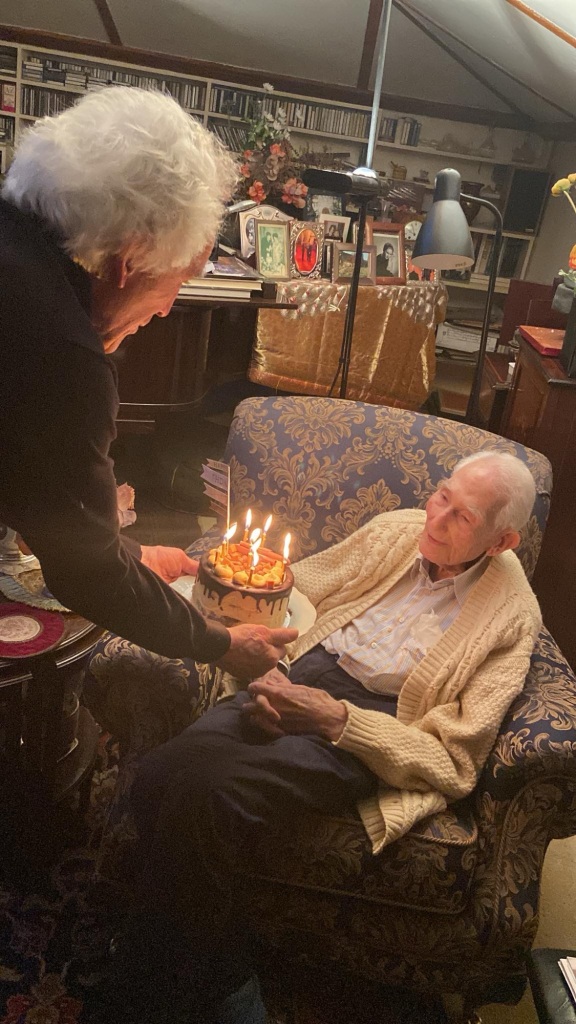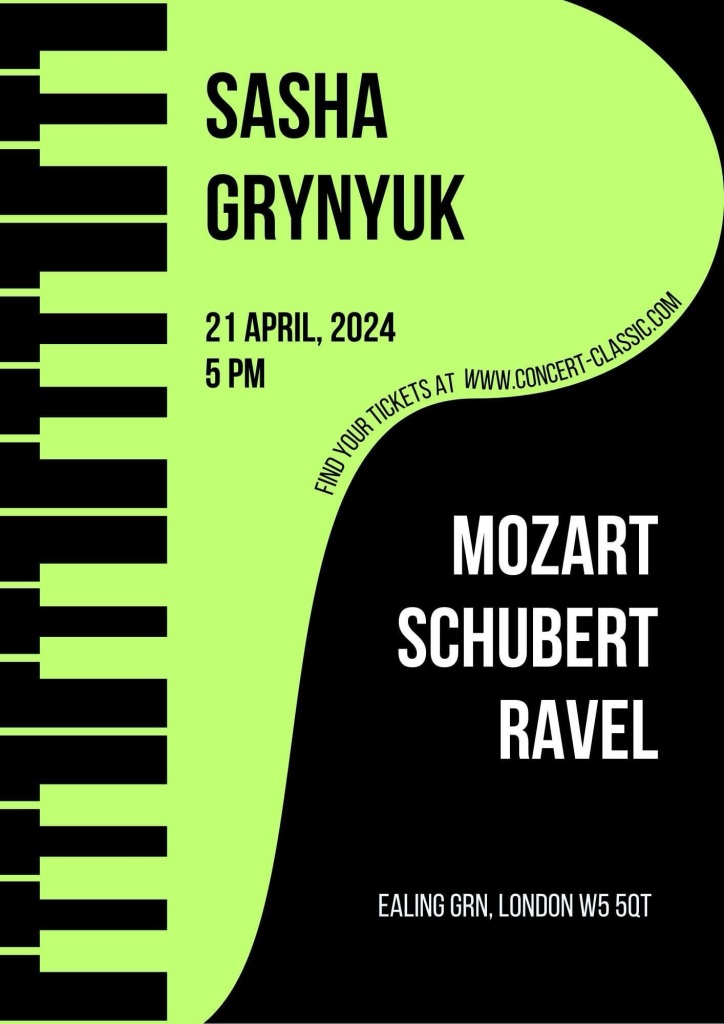
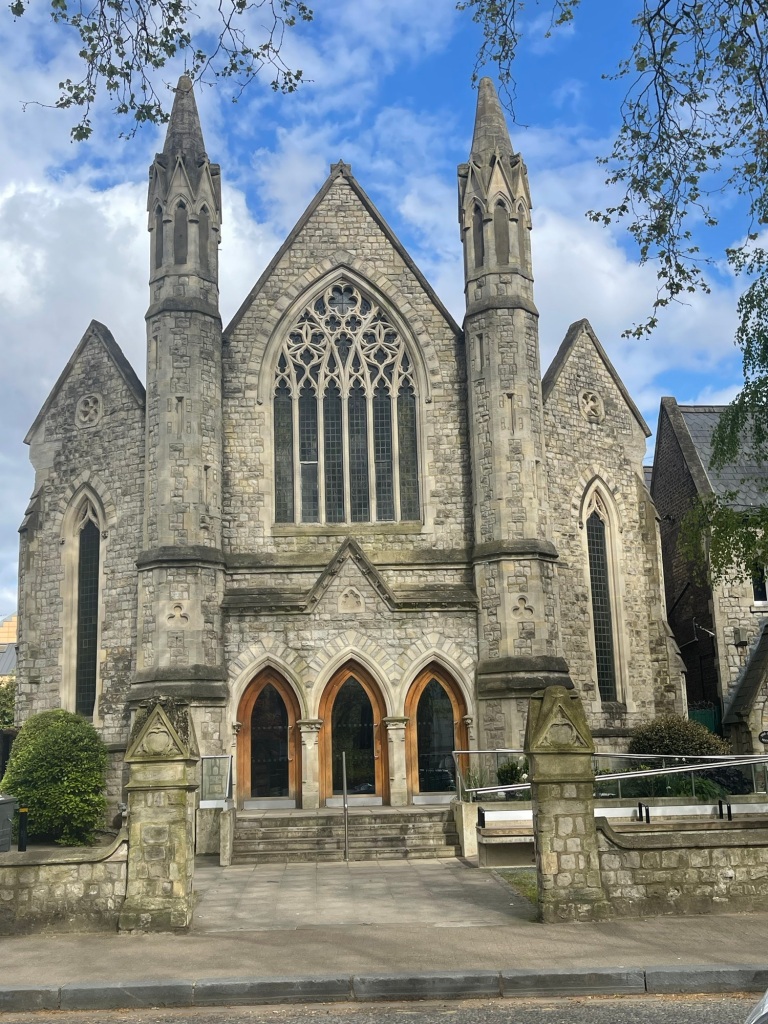
An hour of superb music making this afternoon in Ealing. Sasha Grynyuk playing Mozart Fantasia in C minor with refined poetic insight,a Wanderer fantasy of dynamic drive and architectural understanding but it was Gaspard de la Nuit that astonished for its total mastery and kaleidoscopic sense of colour.

There was an imperious opening to the Fantasia but combined with great tenderness .The startling contrasts were played with disarming simplicity but always with a menacing twist in the tail as this great drama was played out in an absolutely operatic way. In Sasha’s poetic hands one could envisage the drama unfolding as there was an overall sound even where Mozart writes ‘forte’ and then sudden ‘piano’ and the added gasps of ‘fp’ . Sounds that were always in the context of the personages acting on stage and conversing with one another in an age of civilised mutual anticipation.A piano – Rogers – that at first glance one might have thought not possible to bring so vividly to life ,but its almost fortepiano sound lent much to the music like a beautiful but faded photo with its mellow unpercussive sound.
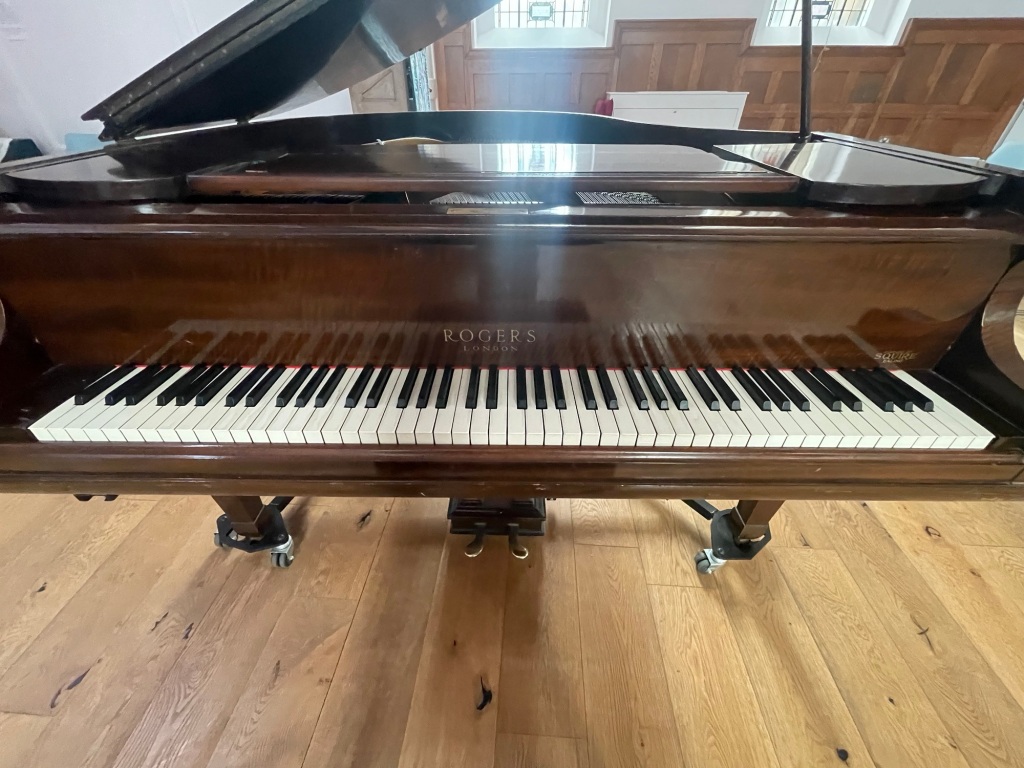
The Allegro burst onto the scene with dynamic drive with Sasha always keeping the sound under control where the contrasts and rhythmic drive were of more importance than the beauty of the voice that he might have given us on a different instrument. Playing of impeccable style and authoritative musicianship it was the ‘Più Allegro’ that truly ignited the piano with sumptuous rich orchestral sounds of dynamic drive and clarity.The ‘recitativi’ were pure opera as the voices conversed , punctuated only by the comments from the ‘tutti’.The return of the opening was like re visiting a distant landscape, which after a brief reminder took flight as Mozart paved the way so dramatically to the Sonata that it precedes.

The mighty ‘Wanderer Fantasie’ ,too,one might have thought too full of notes for this piano .It is often given to advanced students with the precise goal of acquiring a classical technique.Together with Brahms’ Handel and Beethoven 32 variations the Schubert is one of those works where Delius’s remark about Beethoven being all scales and arpeggios might apply to this most Beethovenian of all Schubert’s piano works. It was Sviatoslav Richer,by many considered one of the finest pianists of all time,who enjoyed the challenge of trying to find the ‘soul’ of unknown pianos that he was to find on his whistle stop tours of desolate towns spread all over Russia.Later of course as a great celebrity he always found magnificent pianos awaiting in the greatest concert halls throughout the world.Later in life Yamaha offered to follow him around together with two technicians wherever he chose to go. But it was the search for sound on unknown instruments that ignited his unique musicianship.An Enigma indeed he was.
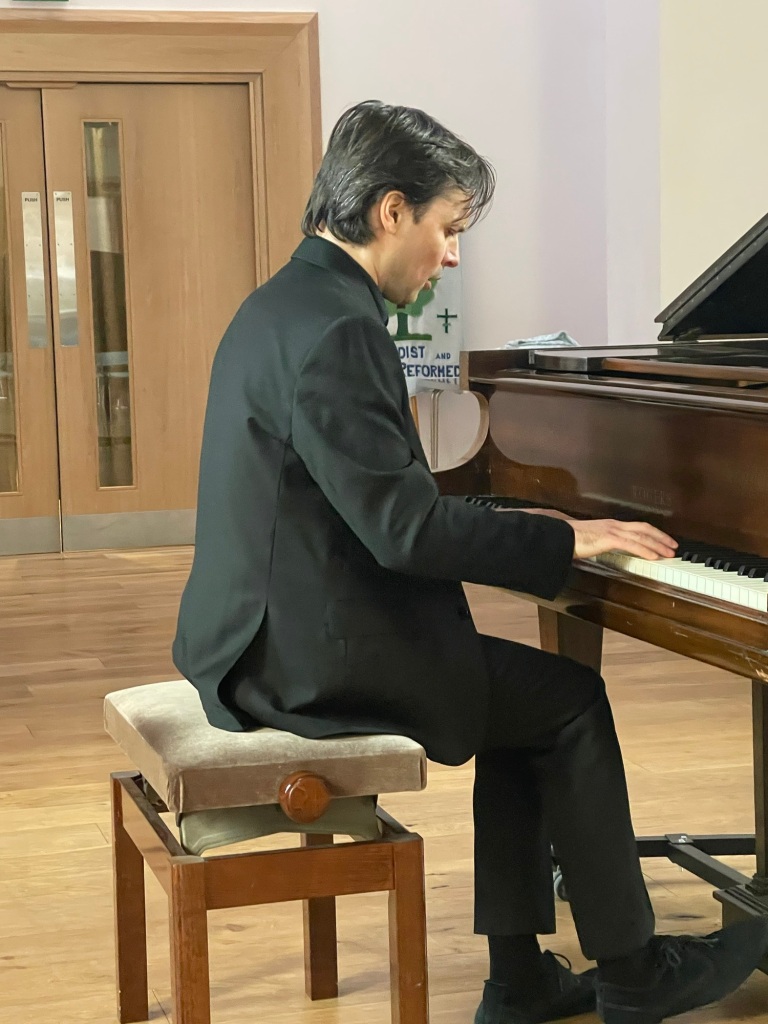
It was the same today for Sasha because as the concert progressed the secrets of the instrument were gradually revealed and incorporated into a creative musicianship that could still bring the music vividly to life without any comparisons. It was the orchestral sounds that opened the ‘Wanderer’ that were played with burning intensity as Sasha could now reveal the true nobility of this remarkable work.There was an architectural shape and sweep to the genial transformation of themes, that was to be the inspiration for Liszt and later for his son in law,Richard Wagner. It was the Adagio – ‘The Wanderer’ – that Sasha gave a truly orchestra fullness too with its quartet richness where every strand was of vital importance.The variations that followed were of chameleonic character from the gentle weaving of the first to the explosive second and the ravishing mellifluous beauty of the third .The gently cascading embellishements of the last were transformed into such a typically Beethovenian tempest .A true eruption played by Sasha with astonishing control and virtuosity but above all the sense of balance of a conductor who is listening to the whole and steering us through the maze of notes with intelligence and clarity of vision.There was the rich embroidery of the Scherzo that after the beseeching innocence and questioning beauty of the Trio was to erupt with cascades of notes and driving rhythms leaving us breathless at the foot of the mighty final Fugato. Nobility and dynamic drive were allied to passion and orchestral colours that Sasha played with unrelenting conviction and artistry. His scrupulous attention to the detail in the score allowed the music to rise and fall as the composer has very meticulously indicated. A mighty work restored to greatness as indeed Richter did many years ago with his landmark recording in collaboration with the musicologist Paul Badura Skoda,taking the music as a vehicle for an apprentice and giving it back into the hands of a great artist.

Ravel was obsessed with the mechanics of piano playing and set out to write a work that would outshine even Balakirev’s Islamey for technical difficulty (you will find Sasha’s performance of Islamey in this link to the performance he gave at the National Liberal Club to celebrate 30 years of the Keyboard Trust of which he is a distinguished member https://christopheraxworthymusiccommentary.com/2023/06/02/the-gift-of-music-the-keyboard-trust-at-30/)
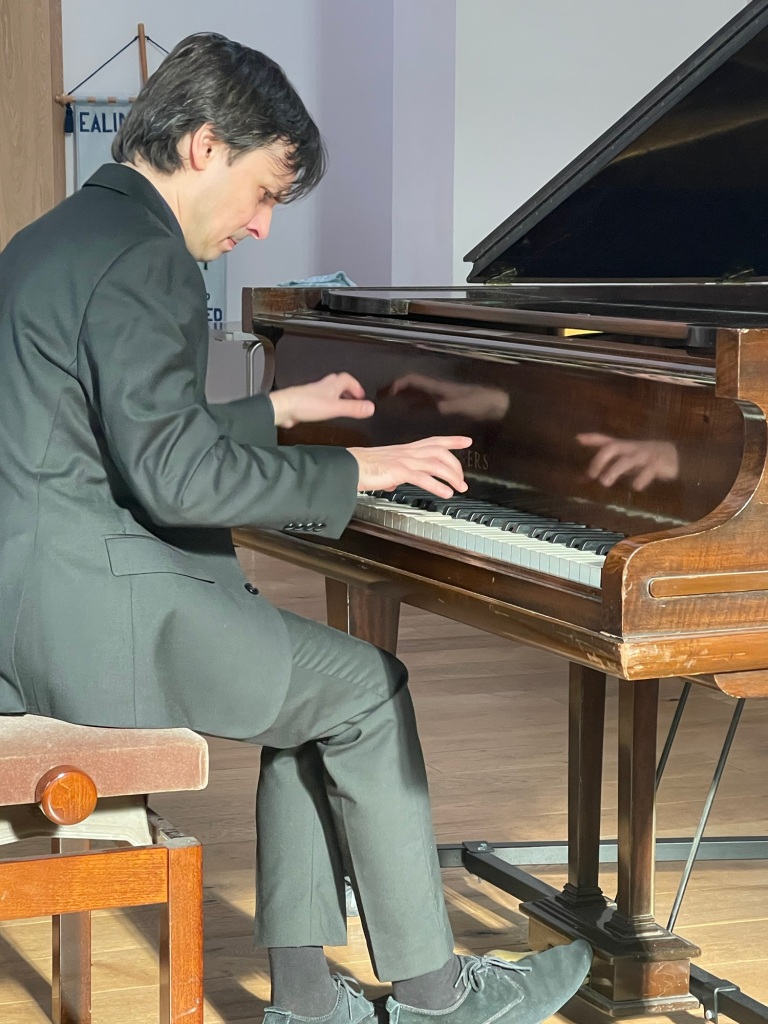
This was a performance of great clarity where all three episodes were united like a Sonata into a unified whole in a way where even the lack of multi colours on this instrument allowed a much clearer musical line. It certainly did not mean that it lacked character, atmosphere or drive and it was actually one of the finest performances that I have heard for a long time. It was the great ‘old’ school of Perlemuter or Tagliaferro who would show us ,with the ‘weight’ of their true deep legato, a line clearly defined ,never allowing fussy detail to cloud the overall vision.This was in a way the performance that Sasha gave us today.There were of course the enormous number of notes that were played with remarkable mastery but there was a clarity of line that made ‘Ondine’ immediately so enticing. A sparkling brilliance as this water nymph splashed her way in and out of the water that Sasha created with fluidity and luminosity. We were not aware of the remarkable technical hurdles as the music flowed constantly forward like the water it was depicting.The massive climax was played with a clarity ,where the musical line was surrounded by clouds of notes,without any slowing or muddying of the texture.There was a haunting beauty to ‘Le Gibet’ with its insistent bell tolling in Sasha’s hands with continuous almost robotic insistence as the arid landscape was revealed with the delicacy of this devastating atmosphere.’Scarbo’ of course just erupted as this impish gnome got up to his devilish antics. and the composer too adding passages of transcendental difficulty for the pianist, that Sasha played with enviable precision and unrelenting drive.Remarkable how in the depths of the piano there was the desperation of a melodic line of such purity with the wind howling all around as the impish demon escaped to create even more havoc until disappearing like magic into thin air from where he had first appeared.
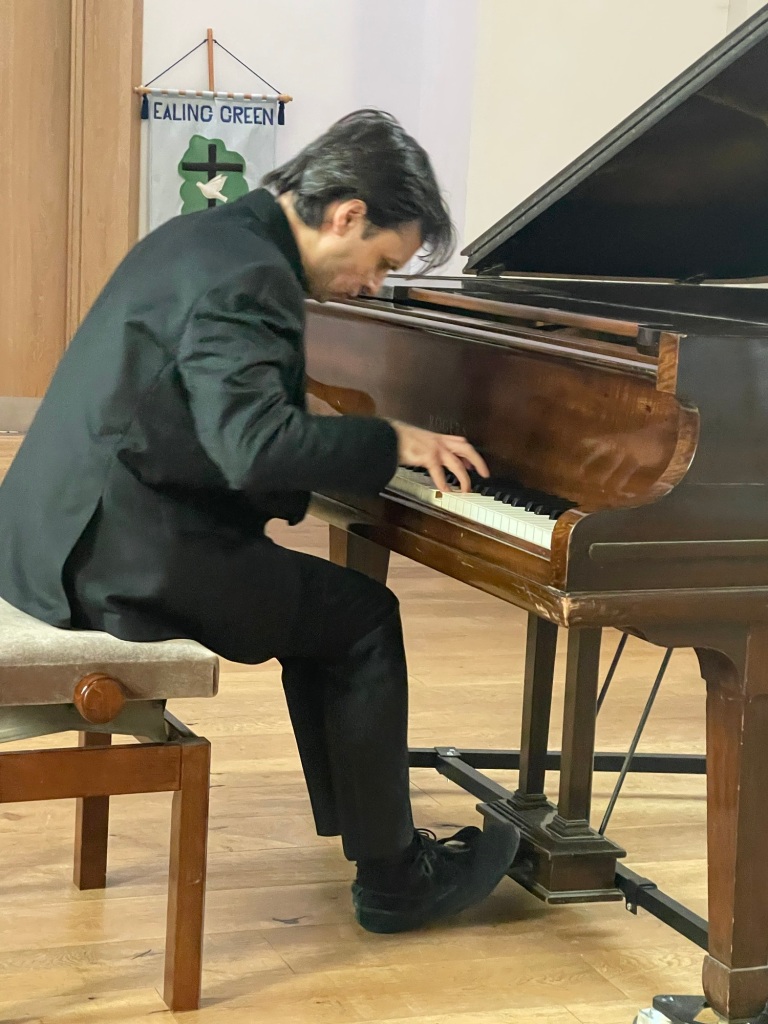
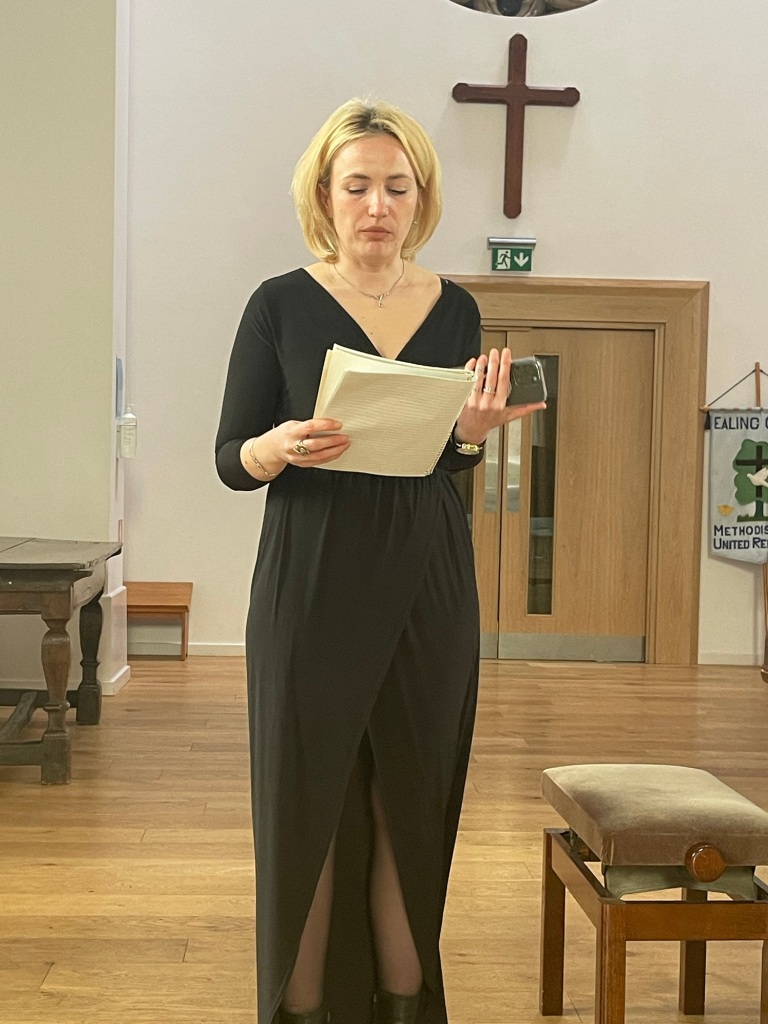
Fantasia No. 4 in C minor, K. 475 was composed by Mozart in Vienna on 20 May 1785 and was published as Opus 11, in December 1785, together with the Sonata in C minor K.457, the only one of Mozart’s piano sonatas to be published together with a work of a different genre.

This astonishing Fantasia is probably one of Mozart’s most innovative compositions for solo keyboard. It was composed for Therese Trattner (1758–1793), and published by Artaria in Vienna towards the end of 1785, alongside the Piano Sonata in C minor K.457.
Therese (born Maria Theresia) Trattner was the daughter of the court mathematician Joseph Anton Nagel. In 1776, she married the widowed Johann Thomas Trattner, a Vienna publisher and bookseller that Mozart knew well. After Mozart settled in Vienna in 1781, Therese Trattner became one of his first piano students, and surely one of the most talented, she remained so until the composer’s death. In 1784, the Mozarts lived in Trattner’s house on the Graben in Vienna. Well connected in Viennese society, Therese Trattner helped him to organise three subscription concerts here, at which the Piano concertos were performed and which further promoted his reputation as a piano virtuoso in Vienna. She also gave concerts (“academies”) herself in her flat in the Trattnerhof, at which Mozart was present.
Although published together Fantasia K.475 and Sonata K.457 were conceived independently: the rediscovery of the autograph of the two works confirms this.
The Fantasie in C major, Op. 15 ( D.760), popularly known as the Wanderer Fantasy, is a four-movement fantasy for solo piano composed by Schubert in 1822 when only 25 in a life that was tragically cut short by the age of 31.It is widely considered his most technically demanding composition for the piano and Schubert himself said “the devil may play it,” in reference to his own inability to do so properly.The whole work is based on one single basic motif from which all themes are developed. This motif is distilled from the theme of the second movement, which is a sequence of variations on a melody taken from the lied “Der Wanderer”, which Schubert wrote in 1816. It is from this that the work’s popular name is derived.The four movements are played without a break. After the first movement Allegro con fuoco ma non troppo in C major and the second movement Adagio (which begins in C-sharp minor and ends in E major), follow a scherzo presto in A-flat major and the technically transcendental finale, which starts in fugato returning to the key of C major and becomes more and more virtuosic as it moves toward its thunderous conclusion.Liszt was fascinated by the Wanderer Fantasy, transcribing it for piano and orchestra (S.366) and two pianos (S.653). He additionally edited the original score and added some various interpretations in ossia and made a complete rearrangement of the final movement (S.565a).I remember a recent lesson I had listened to of Elisso Virsaladze in which I was struck by the vehemence of the Wanderer Fantasy and the ragged corners that we are more used to in a Beethoven almost twice Schubert’s age .It made me wonder about the maturity of the 25 year old Schubert and could he have had a premonition that his life was to be curtailed only six years later.We are used to the mellifluous Schubert of rounded corners and seemless streams of melodic invention.But surely in the final three sonatas written in the last months of his life the A major and C minor start with a call to arms and only in the last B flat sonata do we arrive at the peace and tranquility that Beethoven was to find too in his last sonata.But the deep rumblings in the bass in Schubert’s last sonata give food for thought that his life was not all sweetness and light.I remember Richter’s long tribulation in the recording studio to put on record as near definitive version as possible of the Wanderer Fantasy with the help of the pianist and musicologist Paul Badura Skoda.
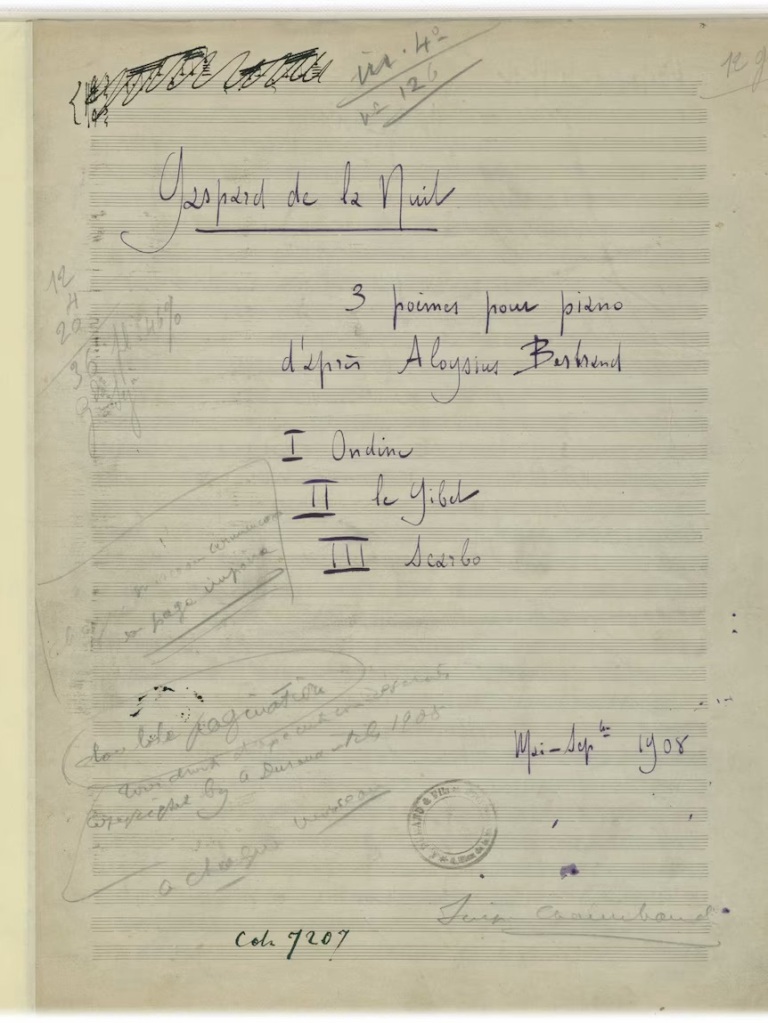
Gaspard de la nuit (subtitled Trois poèmes pour piano d’après Aloysius Bertrand), M.55 was written in 1908. It has three movements , each based on a poem or fantaisie from the collection Gaspard de la Nuit – Fantasies à la manière de Rembrandt e de Callot completed in 1836 by Aloysius Bertrand . The work was premiered in Paris, on January 9, 1909, by Ricardo Vines.
The piece is famous for its difficulty, partly because Ravel intended the Scarbo movement to be more difficult than Balakirev’s Islamey . Because of its technical challenges and profound musical structure, Scarbo is considered one of the most difficult solo piano pieces in the standard repertoire.
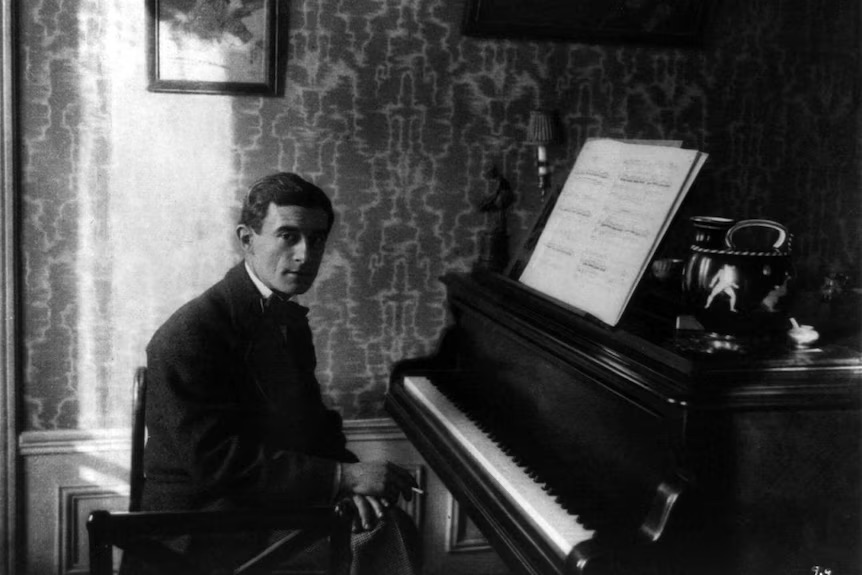
When Ravel was shown the work, some 50 years later, something in Bertrand’s vivid depictions, full of fantastical creatures, spectral netherworlds and gothic darkness, connected with the composer’s own fascination with mysteries of the unknown.
But there was something else about the rhythm and syntax of Bertrand’s writing that Ravel found intriguing, and which seemed to provide a perfect vehicle for the ideas that had been swirling in his imagination and had been briefly glimpsed in other works of the period.
The name “Gaspard ” is derived from its original Persian form, denoting “the man in charge of the royal treasures”: “Gaspard of the Night” or the treasurer of the night thus creates allusions to someone in charge of all that is jewel-like, dark, mysterious, perhaps even morose.
Of the work, Ravel himself said: “Gaspard has been a devil in coming, but that is only logical since it was he who is the author of the poems. My ambition is to say with notes what a poet expresses with words.”
Aloysius Bertrand , author of Gaspard de la Nuit (1842), introduces his collection by attributing them to a mysterious old man met in a park in Dijon , who lent him the book. When he goes in search of M. Gaspard to return the volume, he asks, “ ’Tell me where M. Gaspard de la Nuit may be found.’ ‘He is in hell, provided that he isn’t somewhere else’, comes the reply. ‘Ah! I am beginning to understand! What! Gaspard de la Nuit must be…?’ the poet continues. ‘Ah! Yes… the devil!’ his informant responds. ‘Thank you, mon brave!… If Gaspard de la Nuit is in hell, may he roast there. I shall publish his book.’ ”
And afterwards a birthday celebration for the founder of the Keyboard Trust,John Leech,now entering his 100th year and proud to have established a Trust as a present for his wife Noretta Conci in order to continue her work in helping young artists reach their goal.Sasha just such an artist,still plays every week for Noretta a former assistant to Arturo Benedetti Michelangeli

